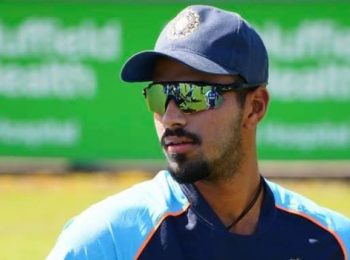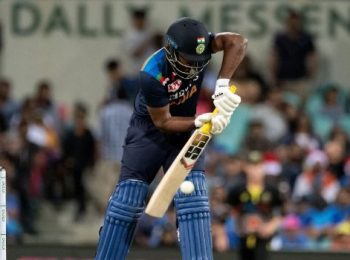The broadcaster’s dream remains intact, with India and Pakistan meeting for the second time in the 2023 Asia Cup, after both teams confirmed their place in the Super Fours stage of the tournament. Since 2013, which remains the last time that India and Pakistan played any form of bilateral cricket, the only instances of these two storied rivals meeting has been at either ICC tournaments (the ODI/T20I World Cups and the Champions Trophy) or the Asia Cup.
And after a washout in Pallekele a week ago, the teams meet each other in Colombo on Sunday with aspirations of a place in the tournament final. Since India recovered from 66 for 4 to add another 200 runs early in the Asia Cup, before rain ruined a potential classic, the sides have taken different routes to picking up a win each.
Rohit Sharma’s team defeated Nepal by 10 wickets to seal passage to the next round, and two days later Babar Azam’s No 1 ranked team beat Bangladesh in Lahore by seven wickets. India have not had to travel at all since they met Pakistan, whereas their opponents have gone from Sri Lanka to Pakistan and back.
It goes without saying that the big hurdle for India’s batsmen remains Shaheen Shah Afridi, whose mesmerizing left-arm pace did for Rohit and Virat Kohli upfront in the opening encounter and then Hardik Pandya and Ravindra Jadeja as the team lost it ways at the backend of their innings. Rohit and Shubman Gill collected bullish half-centuries against Nepal, but whether that translates into sterner business against Afridi is anyone’s guess. And it’s not just Afridi who they need to negotiate, because Naseem Shah and Haris Rauf proved a handful too.
In the last game, Naseem set the ball rolling with the first-ball wicket of the Bangladesh’s centurion from their previous clash, Mehidy Hasan Miraj, and then Rauf took over with a ferocious two-wicket burst. The oldest and quickest of Pakistan’s pace trio, Rauf added a couple more to become the Player of the Match award for taking 4/19, and Naseem returned from a brief injury scare to finish with three. In comparison, India have not played a game since struggling to limit Nepal to 230, and Jasprit Bumrah’s long absence from ODI cricket was extended when he flew home before that match for the birth of his first child.
While India’s win over Nepal cannot quite be termed a statement win, given how ragged the pacers looked for a large part of the first innings, it has at least given Rohit and Gill some welcome form. Albeit against an inferior bowling attack to the one they will again face on Sunday, the Indian openers looked the best they have in a long time and the management will hope that Rohit and Gill can stand up at the Premadasa.
It is not as if India cannot overcome Pakistan’s quicks. Difficult, yes, but not impossible. The first plan should be to see out Afridi’s first spell and try to dominate during the middle overs, where no doubt Rauf is a handful, and then score against the fourth, fifth and sixth bowlers. Having wickets in hand can make a big difference when trying to take on good bowlers, and given India’s long tail they need to conserve their wickets for the final ten overs.
It was not that long ago that Rohit’s ODI batting template entailed seeing out the first dozen overs, even at a run rate of under five an over on occasion, and then setting himself up for the last ten. It was this approach that fetched him three double-centuries and five scores of 150 or more in ODIs between 2014 and 2019, the year in which he collected five hundreds at the World Cup.
Gill, a player not lacking for any shots, could similarly set himself up for a big innings if he opts to play out Afridi and Naseem. The Premadasa Stadium is a venue where runs can be scored, even if the surface can be two-paced, so in this regard Gill has his task cut out. If India can manage to get to 20 overs without more than a couple wickets down, it could greatly boost their chances of putting Pakistan under the pump.
If Pakistan bat first, India can look at the trend of recent matches where early wickets have brought Babar to the crease early. Get Babar – and here the matchup with Kuldeep Yadav is vital – and the middle order will be open, which is where India stand a good chance of making roads. That said, Pakistan might have silently taken a degree of confidence from the win over Bangladesh in Lahore, during which Babar failed and Imam ul Haq delivered a solid 78 and Mohammad Rizwan stood up from No 4 to finish the chase with 63 not out.
While this Pakistan team under Babar looks the most settled in years, India cannot claim to be in such a space given the injury concerns and muddled selections over the past few months. Less than a month to go for the World Cup, Rohit’s team needs a spark to turn around their up and down form. This match, round two of a potential three-round bonanza, could just be the one that reignites India ahead of their home World Cup.



























